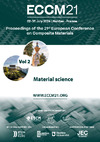Identificador persistente para citar o vincular este elemento:
https://accedacris.ulpgc.es/jspui/handle/10553/132160
| Campo DC | Valor | idioma |
|---|---|---|
| dc.contributor.author | Paula Linderbäck | en_US |
| dc.contributor.author | Silas Gebrehiwot | en_US |
| dc.contributor.author | Laura Montin | en_US |
| dc.contributor.author | Rasmus Björkvall | en_US |
| dc.contributor.author | Suárez García, Luis Adargoma | en_US |
| dc.contributor.author | Jakob Theis | en_US |
| dc.contributor.author | Ortega Medina, Zaida Cristina | en_US |
| dc.date.accessioned | 2024-07-16T13:06:07Z | - |
| dc.date.available | 2024-07-16T13:06:07Z | - |
| dc.date.issued | 2024 | en_US |
| dc.identifier.isbn | 978-2-912985-01-9 | en_US |
| dc.identifier.uri | https://accedacris.ulpgc.es/handle/10553/132160 | - |
| dc.description.abstract | The production of plastics has grown significantly in the last decades, and the trend is expected to continue, depending mainly on increasing demand from various industries, such as packaging, construction, and consumer goods. Today, researchers are looking for new biobased sources to replace fossil fuel-based plastics. Common reed bed along the coast in Baltic Sea present a sustainable resource that could play a role in the future circular economy, but the potential of reeds as an unused biological This study examines the potential of common reed as a sustainable, novel composite material. Common reeds were harvested both in summer and winter, and various blends were analyzed to determine their suitability for composite applications. The mechanical characterization shows that the integration of common reed fibers into polyethylene matrices has been shown to enhance crucial properties such as tensile strength and yield strength, demonstrating that common reed can be utilized in composite materials, thereby reducing reliance on fossil-based plastics. | en_US |
| dc.language | eng | en_US |
| dc.source | Proceedings of the 21st European Conference on Composite Materials ECCM21 / Organizado por Université and the Centrale Nantes and Research Institute in Civil and Mechanical Engineering (GeM). Nantes, France, July 2-5, 2024, v. 2, p. 217-224 | en_US |
| dc.subject | 3303 ingeniería y tecnología químicas | en_US |
| dc.subject.other | Common reed | en_US |
| dc.subject.other | Composite, PE | en_US |
| dc.subject.other | Sustainable | en_US |
| dc.subject.other | Polymer | en_US |
| dc.title | Common reed as a novel biosource for composite production | en_US |
| dc.type | info:eurepo/ semantics/conferenceObject | en_US |
| dc.type | Conference proceedings | en_US |
| dc.relation.conference | 21st European Conference on Composite Materials (ECCM21) | en_US |
| dc.description.lastpage | 224 | en_US |
| dc.description.firstpage | 217 | en_US |
| dc.relation.volume | 2 | en_US |
| dc.investigacion | Ingeniería y Arquitectura | en_US |
| dc.type2 | Actas de congresos | en_US |
| dc.description.notas | ECCM21: 10.60691/yj56-np80 | en_US |
| dc.utils.revision | Sí | en_US |
| dc.date.coverdate | 07/2024 | en_US |
| dc.identifier.ulpgc | Sí | en_US |
| dc.contributor.buulpgc | BU-ING | en_US |
| item.fulltext | Con texto completo | - |
| item.grantfulltext | open | - |
| crisitem.author.dept | GIR Fabricación integrada y avanzada | - |
| crisitem.author.dept | Departamento de Ingeniería Mecánica | - |
| crisitem.author.dept | GIR Fabricación integrada y avanzada | - |
| crisitem.author.dept | Departamento de Ingeniería de Procesos | - |
| crisitem.author.orcid | 0000-0002-6709-1555 | - |
| crisitem.author.orcid | 0000-0002-7112-1067 | - |
| crisitem.author.parentorg | Departamento de Ingeniería Mecánica | - |
| crisitem.author.parentorg | Departamento de Ingeniería Mecánica | - |
| crisitem.author.fullName | Suárez García, Luis Adargoma | - |
| crisitem.author.fullName | Ortega Medina, Zaida Cristina | - |
| crisitem.event.eventsstartdate | 02-07-2024 | - |
| crisitem.event.eventsenddate | 05-07-2024 | - |
| Colección: | Actas de congresos | |
Los elementos en ULPGC accedaCRIS están protegidos por derechos de autor con todos los derechos reservados, a menos que se indique lo contrario.
